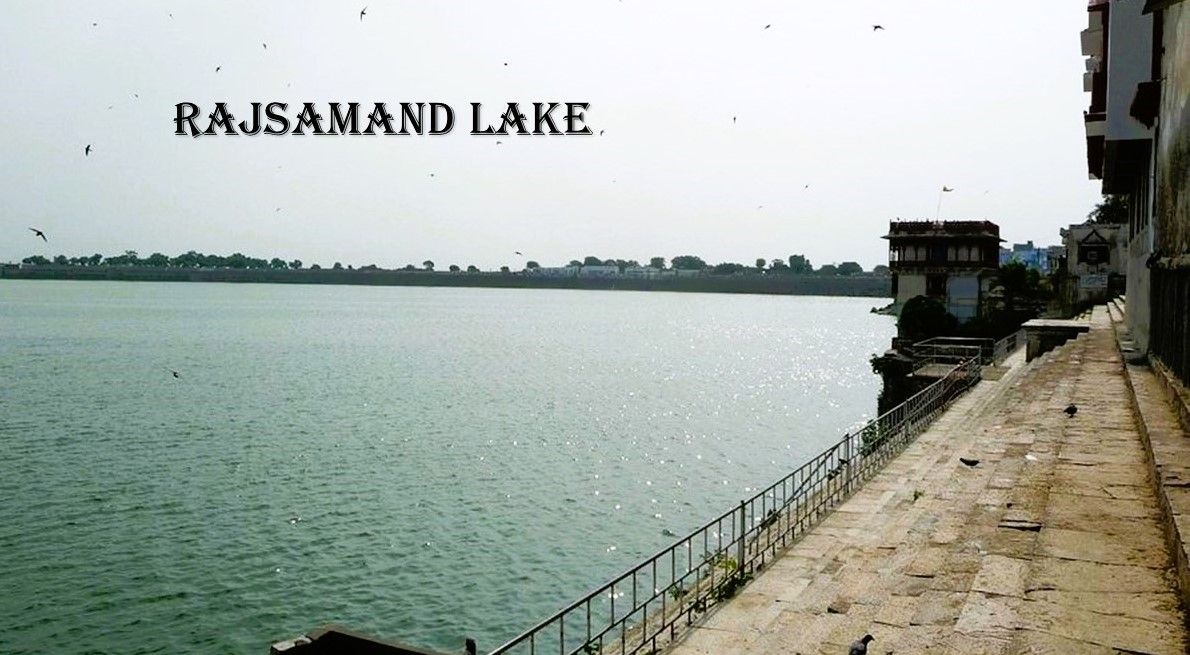
Introduction
Rajsamand Lake, often referred to as Rajsamudra, is one of the most celebrated water bodies in the princely state of Rajasthan, India. Located near the town of Rajsamand and approximately 66 kilometers north of Udaipur, the lake stands as a monumental example of 17th-century engineering, philanthropy, and artistry. Its origin dates back to 1662, commissioned by the visionary Maharana Raj Singh of Mewar. The lake not only serves as an environmental asset but also preserves historical memory through its intricate architecture and inscriptions.
Historical Foundations and Construction Timeline
- The groundwork for Rajsamand Lake began on January 1, 1662, with Ranchod Rai, son of the royal priest Purohit Garibdas, laying its foundation stone on April 17, 1665.
- Its dam construction started on January 14, 1676, culminating in a majestic artificial lake designed to serve both utilitarian and commemorative functions.
- The lake features a long Sanskrit inscription known as Raj Prasasti, carved on 27 white marble slabs and comprising 1017 stanzas—a record of Mewar’s dynastic history. These etchings are considered among the longest in India.
Purpose Behind the Creation
- The lake was conceived as a relief measure during the drought and famine of 1661, aimed at supporting local farmers and generating employment.
- Recognized as Rajasthan’s oldest known public welfare project, the initiative cost an estimated ₹4 million, a significant amount in its time.
- Beyond its functional capacity, the lake symbolized royal benevolence and foresight in ecological management.
Geography and Hydrography
|
Feature |
Details |
|
·
Length |
·
6.4 km (4 miles) |
|
·
Breadth |
·
2.82 km (1.75 miles) |
|
·
Depth |
·
18 m (60 feet) |
|
·
Catchment Area |
·
510 km² (196 sq. mi) |
|
·
Water Sources |
·
Rivers Gomati, Kelwa, and Tali |
|
·
Location |
·
Between Rajnagar and Kankroli |
- The lake's primary feeder is the River Gomati, a lifeline for sustaining water levels.
- Seasonal monsoons play a critical role in refilling the lake, which has faced multiple episodes of dry spells notably in 2000, when the basin revealed a cracked mud surface due to intense drought.
Architectural Grandeur: The Southern Embankment
- Situated at the Kankroli end, the embankment is built with white stone, measuring 183 meters in length and 12 meters high.
- It features marble terraces, stone ghats, ornamental arches, and pavilions commissioned by Princess Charumati, who honoured Maharana Raj Singh for saving her from an enforced marriage to Emperor Aurangzeb.
- The highlight includes five Toranas (weighing arches) used for the Tuladan ceremony, where rulers were weighed in precious metals and distributed the equivalent value to Brahmans or for building public utilities.
- The nine intricately decorated pavilions, called Nauchowki, showcase carvings of celestial motifs, deities, dancers, and birds each narrating tales of cultural splendor.
Historical Significance and Wartime Usage
- During a fierce 17th-century battle in Rajsamand district, the lake’s dam became a defensive site. It was bravely protected by Anand Singh, a Mewar military officer who perished while repelling Mughal forces.
- The lake also played a role during World War II, serving as a seaplane base for Imperial Airways for approximately six years, giving it relevance beyond local utility into global geopolitics.
Ecological and Cultural Relevance
- Rajsamand Lake stands as a vital ecological zone, attracting migratory birds and sustaining local flora and fauna despite the challenges of climate variability.
- It is counted among the five great lakes of Mewar, alongside Lake Pichola and Fateh Sagar Lake.
- The area is a popular destination for Cultural Tourism, where visitors can witness centuries-old traditions, architecture, and scenic beauty that evoke Rajasthan’s regal spirit.
Conclusion
Rajsamand Lake is more than a reservoir it is a living archive of Mewar’s legacy, a testament to the humane foresight of its rulers, and a marvel of architectural and ecological planning. While it continues to be affected by climatic uncertainties, its historical depth and cultural importance endure. Visitors and history buffs alike are drawn to its tranquil waters, etched chronicles, and stone ghats, which silently echo stories of resilience, royalty, and reverence.